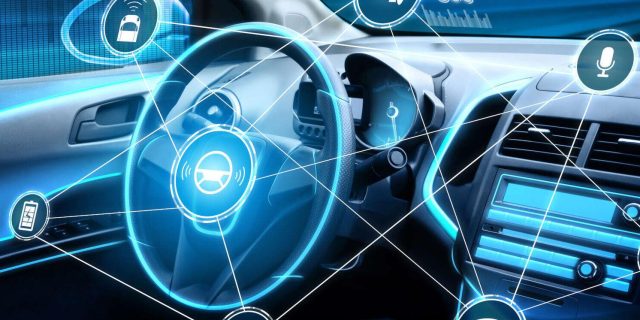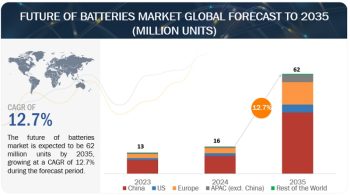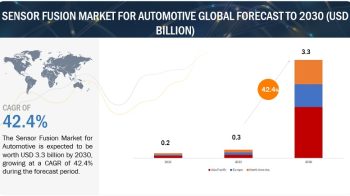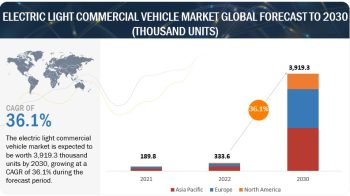
The global automotive cybersecurity market is projected to reach USD 5.3 billion by 2026, from USD 2.0 billion in 2021, at a CAGR of 21.3%. The growth of the market is driven by the growing demand for added infotainment, telematics, convenient features and stringent safety mandates for a safer driving experience. The automotive cybersecurity market has promising growth potential due to several factors, including increasing use of mechatronics devices inside the vehicle, increasing consumer demand for added safety and entertainment features, improving vehicle connectivity and vehicle management. Moreover, launch of UNECE WP.29 regulations and “Auto Data” regulation in China are expected to boost the demand for automotive cybersecurity solutions, globally. Also, these regulations are expected to reshape the automotive value chain by including cybersecurity priorities globally. Also, the increasing sales of semi-autonomous vehicles and growing advancements towards development of fully autonomous vehicles are expected open new opportunities for the automotive cybersecurity solution providers in the coming years globally.
In the present scenario, there are more non-autonomous vehicles than semi-autonomous vehicles. However, the rising penetration of advanced driver assistance and active safety features in new passenger cars is expected to accelerate the growth of semi-autonomous vehicles in the coming years. ADAS and Level 2 autonomy are now considered as must-have features by OEMs, thereby catalyzing the demand for semi-autonomous vehicles globally. Also the government focus on reducing vehicle fatalities has further increased the popularity of V2V and V2P technologies, thereby leading to semi-autonomous vehicles’ growth. Along with this, the increasing demand for modern infotainment systems has further increased the number of ECUs and sensors in a vehicle, subsequently increasing the complexity of the vehicle’s E/E architecture and coding and resulting in more threats for cyber-attacks. Therefore, the demand for cybersecurity solutions is expected to increase with the higher adoption of Level 2 autonomy, ADAS features, and other connected technologies globally.
Download PDF Brochure @ https://www.marketsandmarkets.com/pdfdownloadNew.asp?id=170885898
On the other hand, at level zero autonomy or non-autonomous vehicles, various driver support systems are present in a vehicle, such as stability control, forward-collision warning, automatic emergency braking, blind-spot warning, and lane-keeping assistance. This increases the ECU consumption of the vehicle and thus opens opportunities for a hacker to hack the vehicle. Apart from this, navigation systems, radio, USB port, remote keyless entry, and telematics services are the features that increase the requirement for better network connectivity of a vehicle. Therefore, the vulnerability of a non-autonomous vehicle is increasing with the rising number of ECU connections as well as the vehicle’s connection with Wi-Fi or the cloud network. The above-mentioned features also require a greater number of sensors in a vehicle, thereby getting exposed to several cyber-attacks, such as Blind Spot Exploitation Attack, Sensor Interference Attack, and Physical Tampering Attack. This would be expected to augment the demand for automotive cybersecurity solutions in the non-autonomous vehicles segment globally.
The modern passenger vehicles are more susceptible to the risk of cyberattacks compared to commercial vehicles. This is because passenger vehicles are equipped with connected vehicle features that sync with the external environment. These vehicles utilize 50–100 ECUs for their operations. Modern luxury cars can have over 150 ECUs, which further creates opportunities for cyber-attacks. Thus, the attack surface in passenger vehicles is broad. Apart from this, the V2X technologies in passenger cars are more susceptible to cyberattacks than commercial vehicles as connected technology is more prevalent in passenger cars at present than commercial vehicles. The OBUs in passenger cars are more than in commercial vehicles. In-vehicle communication systems and an increasingly wide range of external networks such as Wi-Fi and cellular make passenger cars more vulnerable to cyber threats. The connected passenger cars collect massive amounts of data from different sources. They interact with each other, exchange data, and alert drivers with constant updates.
Request Free Sample Report @ https://www.marketsandmarkets.com/requestsampleNew.asp?id=170885898
Passenger cars can also interact with sensors on road signs or stoplights, charging stations, and even the ones embedded in the roads (RSUs) to get traffic updates and rerouting alerts. V2X enabled passenger cars will also be able to communicate with houses, offices, and smart devices, gathering a wide array of information. Thus, cybersecurity in passenger cars will be of utmost importance with a large amount of V2V and V2I data transfer in the future. Also, the increasing adoption of ADAS features in passenger cars is another major factor creating the need for cybersecurity solutions and it is expected to further boost the demand for cybersecurity solutions in the passenger vehicles segment in the coming years globally. Therefore, the passenger vehicles segment is expected to dominate the automotive cybersecurity market during the forecast period globally.
Key Market Players:
The global automotive cybersecurity market is dominated by major players such as Continental AG (Germany), Robert Bosch GmbH (Germany), Harman International (US), DENSO Corporation (Japan), Aptiv PLC (Ireland), Karamba Security (Israel), SafeRide Technologies (Israel), Arilou Technologies (Israel), GuardKnox Cyber Technologies Ltd. (Israel), Upstream Security Ltd. (Israel), and Green Hills Software., etc
Inquiry Before Buy @ https://www.marketsandmarkets.com/Purchase/purchase_reportNew.asp?id=170885898


